my top bar works fine in all other iPhones except iPhoneX due to safe area introduction.The top bar starts in unsafe area itself.The top bar is a custom UI.It looks as below:
The code is as follows:
//Top Bar
let topBar = UIView(frame:CGRect(x: 0,y: 0, width: width, height: 60))
topBar.backgroundColor = UIColor.white
topBar.layer.shadowColor = UIColor.gray.cgColor
topBar.layer.shadowOffset = CGSize(width: 0, height: 3)
topBar.layer.shadowOpacity = 1
topBar.layer.masksToBounds = false
topBar.layer.shadowRadius = 8.0;
self.view.addSubview(topBar)
How do I fix this.I want view to start from safe area.And I don't want to use UINavigationBar.Thanks.

